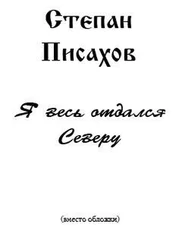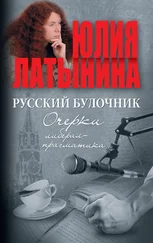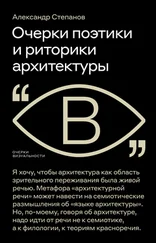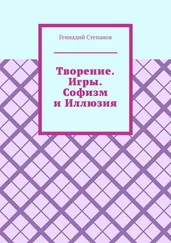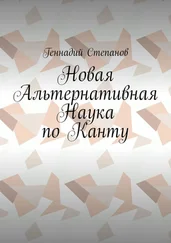Kesner L. Gombrich and the problem of the Relativity of Vision // Human Affairs. 2009. Vol. 19. P. 266–273.
Wood C. S. E.H. Gombrich’s ‘Art and Illusion: A Study in the Psychology of Pictorial Representation’, 1960 // The Burlington Magazine. 2009. December. P. 836–839.
Kopecky V. Letters to and from Ernst Gombrich regarding Art and Illusion, including some comments on his notion of “schema and correction” // Journal of Art Historiography. 2010. No. 3. December.
Mitrovic B. A Defence of Light. Ernst Gombrich, the Innocent Eye and Seeing in Perspective // Journal of Art Historiography. 2010. Vol. 3. P. 1–30.
Woodfield R. Ernst Gombrich: Iconology and the ‘linguistics of the image’ // Journal of Art Historiography. 2011. No. 5. December. P. 1–25.
Dedman R. The importance of being Ernst: a reassessment of E.H. Gombrich’s relationship with psychoanalysis // Journal of Art Historiography. 2012. No. 7. December.
Mitrovic B. Visuality After Gombrich: the Innocence of the Eye and Modern Research in the Philosophy and Psychology of Perception // Zeitschrift für Kunstgeschichte. 2013. Bd. 76. S. 71–90.
Mitrovic B . Nelson Goodman’s Arguments against Perspective: a Geometrical Analysis // Nexus Network Journal. 2013. Vol. 15.
Taylor P., Hope C., Burke P., Mount H . Meditations on a Heritage: Papers on the Work and Legacy of Sir Ernst Gombrich. Paul Holberton Publishing, 2014.
О венском искусствознании см. самые последние публикации: Geistiges Leben im Österreich der Ersten Republik: Auswahl der bei den Symposien in Wien vom 11. bis 13. November 1980 und am 27. und 28. Oktober 1982 gehaltenen Referate. Oldenbourg Akademieverlag, 1986; Klassische Texte der Wiener Schule der Kunstgeschichte: Gesammelte Aufsätze. Bd. 1–4 / Artur Rosenauer (Hrsg.) Facultas, 1996–2004; Feichtinger J . Wissenschaft zwischen den Kulturen: Österreichische Hochschullehrer in der Emigration 1933–1945. Frankfurt a/M: Campus, 2001; Wiener Jahrbuch für Kunstgeschichte / Wiener Schule: Erinnerung und Perspektiven. Ernst Bacher und Artur Rosenauer (Hrsg.). Böhlau Verlag, 2005; Lachnit E . Die Wiener Schule der Kunstgeschichte und die Kunst ihrer Zeit. Wien: Böhlau, 2005; Kandel E., Wiese M . Das Zeitalter der Erkenntnis: Die Erforschung des Unbewussten in Kunst, Geist und Gehirn von der Wiener Moderne bis heute. München: Siedler, 2012.
Gombrich E . An Autobiographical Sketch // Idem. Topics of our Time. Twentieth-centuries Issues in Learning and Art. London: Phaidon, 1991. Р. 12.
История их обращения и вообще отношение в семье к иудаистской традиции излагается Гомбрихом довольно подробно в беседах с Дидье Эрибоном: Gombrich E.H. A Lifelong Interest. Conversations on Art and Science with Didier Eribon. Lnd, 1993. Р. 15, 25 ff. Всей этой проблематике в совокупности посвящена недавняя диссертация: Caroline A. Kita . Jacob Struggling with the Angel: Siegfried Lipiner, Gustav Mahler, and the Search for Aesthetic-Religious Redemption in Fin-de-siècle Vienna. Buffallo: Duke University, 2011.
A Lifelong Interest… P. 25.
Ibid. P. 28.
Gombrich E. An Autobiographical Sketch // Idem. Topics of our Time. Twentieth-centuries Issues in Learning and Art. Phaidon, 1991. Р. 11.
A Lifelong Interest… Р. 15–16.
Ibid. Р. 25.
An Autobiographical Sketch… P. 12.
A Lifelong Interest… P. 30.
An Autobiographical Sketch… P. 12–13.
A Lifelong Interest… P. 30–31.
Ibid. P. 28, 30.
Это довольно примечательное учебное заведение, основанное в XVIII в. еще Марией-Терезией (откуда название). Вначале – строго аристократическое, а во времена Гомбриха – подчеркнуто демократическое («просто хорошее») и не утратившее своего гуманитарно-гуманистического пафоса (латынь и греческий преподавались на должном уровне).
A Lifelong Interest… P. 32.
Ibid. P. 33.
Ibid.
Ibid. P. 34.
Ibid. P. 35.
Waetzold W . Deutsche Kunsthistoriker vom Sandrart bis Justi.
Bd. 2. Leipzig: E. A. Seeman, 1921–1924.
См. поздние воспоминания, изданные по-немецки: Gombrich E. Wenn’s euch Ernst ist, was zu sagen… // Kunsthistoriker in eigener Sache / M. Sitt (Hrsg.). Berlin, 1990. S. 66.
A Lifelong Interest… P. 35. См.: Wenn’s euch Ernst ist, was zu sagen… S. 65, где упоминается Нина Шпиглер, которой, по ее признанию, мешал у Тициана воспринимать сюжет… колорит!
Gombrich E. The Preference for the Primitive: Episodes in the History of Western Taste and Art. London; N.Y.: Phaidon, 2002.
An Autobiographical Sketch… Р. 14.
С немецкого это слово переводится и как образование, и как формирование, и как просвещение. – Примеч. ред .
Wenn’s euch Ernst ist, was zu sagen… S. 66.
A Lifelong Interest… Р. 26.
A Lifelong Interest… Р. 27.
Wenn’s euch Ernst ist, was zu sagen… S. 66.
A Lifelong Interest… P. 36.
Ibid.
Tietze H. // Burlington Magazine. 1954. Vol. 96. P. 289–290.
Wenn’s euch Ernst ist, was zu sagen… S. 70.
См. также и его некролог: Schlosser J. von // Burlington Magazine. 1939. Vol. 74. P. 98–99. Кроме того: Einige Erinnerungen an Julius von Schlosser als Lehrer // Kritische Berichte. 1988. Nr. 4. S. 5–9.
Gombrich E. Zum Werke Giulio Romanos // Jahrbuch der kunsthistorischen Sammlungen in Wien. N.F. 1934. Bd. 8. S. 79–104.
Ср. рецензию на самого Гомбриха с характерным названием: Giovanni P. E.H. Gombrich, conservatore Viennese // Paragone. 1968. Vol. 19. P. 22–40.
Wenn’s euch Ernst ist, was zu sagen… S. 67.
Читать дальше
Конец ознакомительного отрывка
Купить книгу

